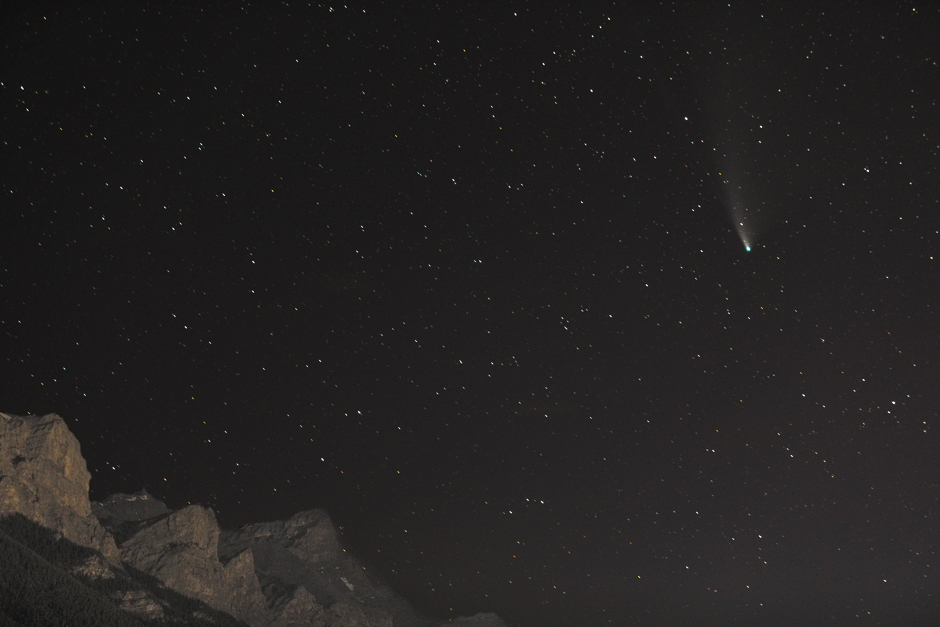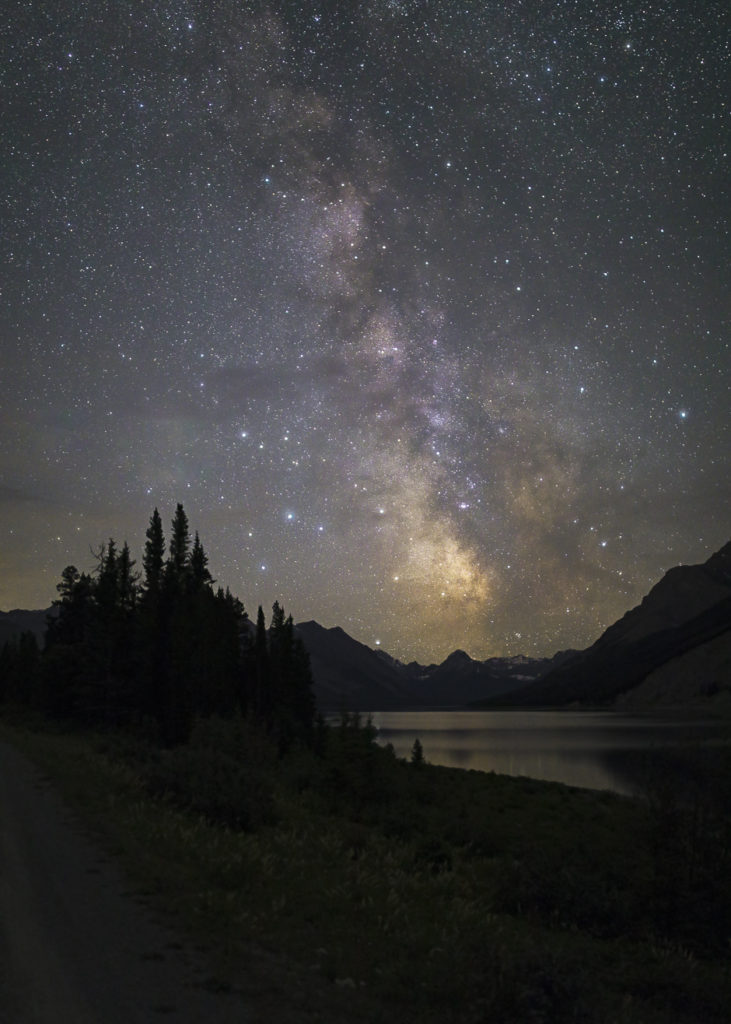Astrophotography is photography of astronomical objects, celestial events, and areas of the night sky. I had a good week, capturing two celestial events, a comet passing through and an appearance of the Milky Way.
Comet Neowise is a long period comet with a near-parabolic orbit, discovered on March 27,2020. It orbits the sun on a very long trajectory. It was only recently discovered because no one was paying attention the last time it came by, 6,766 years ago. If you’d like to observe it, now’s the time, it won’t be returning for another 68 centuries.
Althoug small (5 km or 3 miles in diameter) in comparison to the stars, it appears brighter because it’s much closer. On July 22 it reached its closest approach to earth, passing within 63 million miles. Here’s how you can observe it if you’re interested..https://calgary.ctvnews.ca/it-could-be-your-last-chance-to-see-the-neowise-comet-before-it-disappears-for-six-millenia-1.5036559
This photograph, taken at 12:26 am this morning, July 24 shows the comet and its diaphonous tail extending behind it. I was able to photograph it from our back deck on a very clear night. That’s Mount Rundle you see in the bottom left hand corner.

Earlier this week, I went out with friend and fellow photographer, Harv Emter to photograph the Milky Way. This celestial event occurs monthly during the summer months and can be viewed for two to three days before and after the new moon, when there is little to no moonlight. Clear skies are essential and light pollution from cities and towns must be avoided.
The Milky Way is the galaxy that contains our Solar System, with the name describing the galaxy’s appearance from Earth: a hazy band of light seen in the night sky formed from stars that cannot be individually distinguished by the naked eye.
We traveled south of Canmore, about 23 km (14 miles) to a location on Spray Lake. It was very dark, just what we needed and we were able to get some pretty good shots between brief interludes of cloud.
We called it a day (night?) around 2:00 am, when the galactic centre (bright orange ball at the bottom of the Milky Way) disappeared behind the east flank of Mount Nestor on the right.

Although feeling a little sleep-deprived, it was a great week, enjoying two very memorable experiences.
